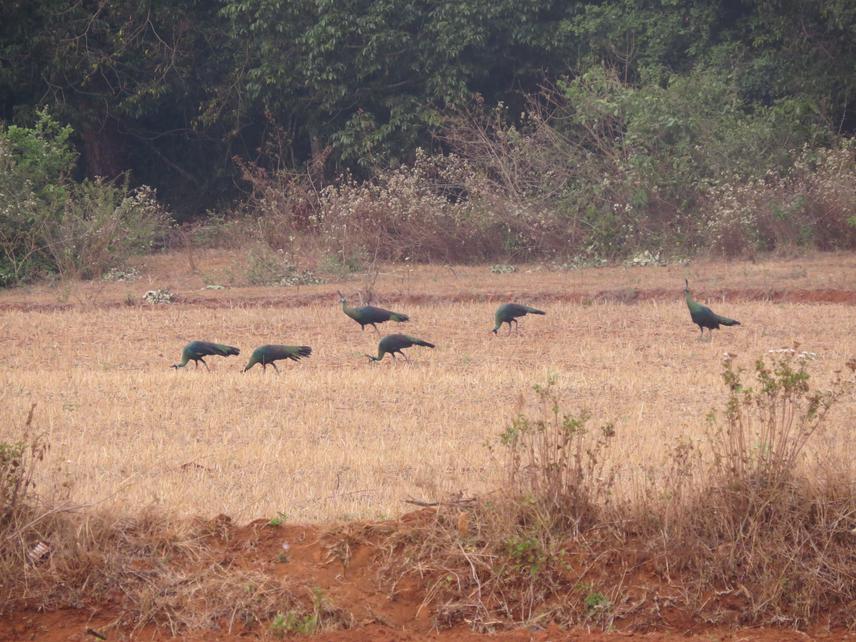Nay Myo Shwe
Other projects
28 Jun 2019
Developing a Local Community Based Long Term Management for the Green Peafowl Population in the Non-Protected Pwehla Region Southern Shan State, Myanmar
Ecology and Conservation of Green Peafowl in Pwe Hla Region and its Vicinity

Green Peafowl Females.
The Green Peafowl (Pavo muticus) was widely distributed throughout Southeast Asia. Population is declining as a result of hunting for food, the pet and feather trade and the collection of eggs. The situation has worsened due to recent habitat loss and fragmentation in several parts of its range. Recently, the species became extinct in Peninsular Malaysia and Bangladesh, while in all other range countries the abundance has decreased dramatically. Most are studied inside PAs and less information outside PAs. Consequently, lack of protection outside PAs. Green Peafowl is a national bird of Myanmar and mostly can be found outside of PAs and commonly were found in disturbed habitat such as monastery areas, cultivated area, riverside, fallow land and road side. The Pwe Hla village which is situated in southern part of Shan State, Myanmar is remaining viable population of Green Peafowl in the remaining forest patch. But, pesticides used in agriculture land is one of major threats to the species apart from chasing by dog. Moreover, movement pattern and tolerant in disturbing habitat of species is most crucial for education and awareness for local communities.
Contribution of my work is first, to understanding ranging behavior of species by radio telemetry methods in the project site. Additionally, determine and conserve the roosting trees and mating ground. Then, use those all ecological information in awareness raising for local communities and farmers. Moreover, can clarify degree and effect of pesticide used in agriculture to the species, hunting pressure by domestic dogs from the villages and monastery and accidental killed to species. Then, will educate to local communities to maintain stable viable population of the species in their remaining forest around agriculture land. Secondly, awareness raising program at school and Buddha monetary for long term conservation of species. Lastly, all information will going to support for National species conservation action plan and National Biodiversity Strategy and Action Plan- NBSAP).